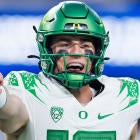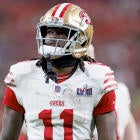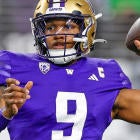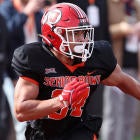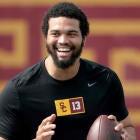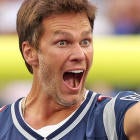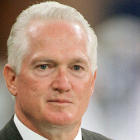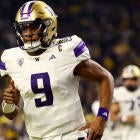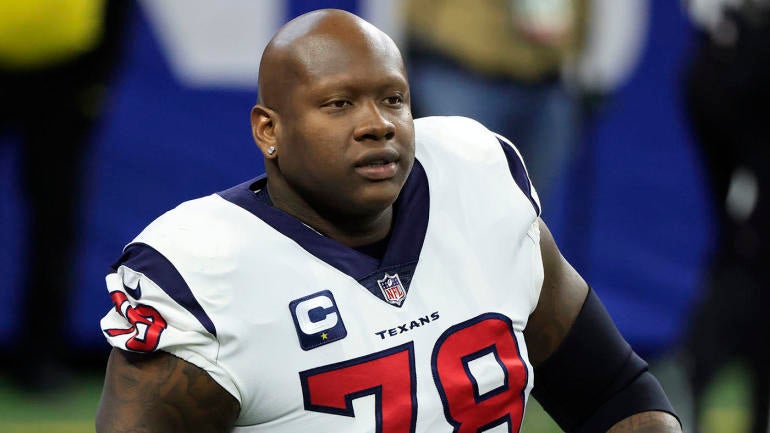
Agents are occasionally required to deal with circumstances and information surfacing close to the NFL Draft which could cause a client to be selected later than anticipated, if at all.
University of Georgia defensive tackle Jalen Carter is arguably the best player available in this year's draft. Off the field issues could affect where Carter is selected. In March, Carter pled no contest to charges of racing and reckless driving in connection to a car crash that killed one of his college teammates and a Georgia football staff member. He will not serve in any jail time.
Carter also didn't do himself any favors when he failed to finish his pro day workout in which he was several pounds heavier than at the NFL Combine. Seasoned agent Drew Rosenhaus, who has plenty of experience with pre-draft damage control, seemingly has been able to prevent a major draft slide.
Two of the most notable instances over the last few years to see their draft stock plummet -- La'el Collins and Laremy Tunsil -- weren't as fortunate as Carter.
Collins was projected to be a first-round pick until Baton Rouge, Louisiana, police wanted to speak to him about a pregnant ex-girlfriend who was murdered in her apartment in the days leading up to the 2015 draft. The LSU offensive tackle didn't get selected because he wasn't cleared by police until several days after the draft occurred. Collins signed with the Cowboys as an undrafted free agent. He was a starter during his six seasons in Dallas. Collins currently plays for the Bengals.
Tunsil was a potential top-five pick in 2016 when a video of him smoking marijuana through a bong in a gas mask was tweeted from his account minutes before the draft started. The video resulted in the Ole Miss offensive tackle slipping several spots in the draft. The Dolphins selected Tunsil with the 13th overall pick.
Tunsil has rebounded nicely. He was the NFL's first $20 million-per-year offensive lineman in 2020. He became the league's first $25 million-per-year offensive lineman in March.
I was involved in a unique situation 20 years ago in 2003 while I was still an agent. The sports management firm I helped found, Premier Sports and Entertainment, represented Oregon State cornerback Dennis Weathersby.
On Easter Sunday (April 20) six days before the 2003 draft, Weathersby was a victim of a drive by shooting in his hometown of Duarte, California. He was fortunate to survive being shot in the back where a bullet passed through his torso without damaging any organs or muscles before lodging in his left arm.
Obviously, our initial and primary concern was Weathersby's well-being. As you can expect, NFL teams took Weathersby off their draft boards after learning of the shooting.
Once we knew Weathersby's injuries weren't life-threatening, we went into scramble mode to try to salvage his draft stock. There isn't any blueprint or playbook for dealing with a draft eligible client getting shot so close to the draft.
Weathersby was considered as a late first-round to mid-second-round pick prior to his shooting. He had excellent size and speed for a cornerback. Weathersby was 6-foot-1, weighed 205 pounds and ran the 40-yard dash in 4.38 seconds at the NFL Combine.
The police initially investigated Weathersby's attempted murder as a gang-related incident, which was concerning to NFL teams. Weathersby didn't have any gang affiliations. He was a member of the Pac-10 All-Academic team.
We had regular communication with the police to try to clear up misconceptions about Weathersby. He was quickly cleared of any wrongdoing. The police agreed to publicly state that Weathersby was an innocent bystander who was at the wrong place at the wrong time. We also had the police put their conclusions in writing. The report was sent to NFL teams to alleviate any character concerns that may have been raised by the incident.
Getting up to date and accurate information about Weathersby's condition from his doctors was crucial. The hospital and medical staff was extremely cooperative. Reports and written statements from Weathersby's doctors detailing the extent of his injuries, his expected recovery time of six to eight weeks, and containing assurances that his football career wouldn't be affected were given to teams.
I was the internal liason with the Oregon State football department. Mike Riley, who was head coach at the time, was particularly helpful. I had met Riley when I attended Oregon State's Pro Day that March. Riley was comfortable serving as a character reference for Weathersby and making phone calls to NFL teams on his behalf. I had conversations with Riley during that week where I would give him the latest information we had from the doctors and the police.
One of my colleagues, Steve Caric, was responsible for handling the media. He was best equipped for that role because of his background in marketing and public relations. Caric, who is currently senior vice president of Wasserman Football, set up a television interview for Weathersby with ESPN that would air the day prior to and the morning of the draft.
We felt "a picture is worth a thousand words" could be applicable to Weathersby as he started slowly improving medically. The thought was a visual where teams could see and hear from Weathersby would be beneficial. Caric traveled to Duarte to coordinate the interview with ESPN.
The interview was somewhat of an optical illusion. Caric remembers helping Weathersby get dressed and out of his hospital bed for the piece because he was pretty weak. Weathersby had lost a lot of blood from when he was shot.
The interview contained footage of Weathersby nicely dressed and walking outside of the hospital so teams had some visual confirmation that he wasn't going to have any long-term physical effects from the shooting. Weathersby was still hospitalized when the interview was first shown. He was released from the hospital before the draft was held.
The draft was conducted on the weekend over two days in 2003 (April 26 and April 27). The first three rounds were on Saturday. The fourth through seventh rounds took place on Sunday. We were relieved when Weathersby was drafted by the Bengals with the first pick in the fourth round (98th overall).
Apparently the ESPN interview was effective. Caric recalled a conversation he had with the Bengals after the draft where he was told Weathersby was only put back on Cincinnati's draft board after watching the interview.
Weathersby's NFL career never did get untracked. His recovery took longer than expected. Weathersby played four games his rookie season, mostly on special teams. Almost a year to the day of his shooting, he suffered severe head trauma during a car accident on a rain slickened interstate exit ramp in Cincinnati.
Weathersby was in coma for a couple of weeks. He missed the entire 2004 season and was released the following March in 2005 when Cincinnati team doctors wouldn't clear him to resume his NFL career. Other teams that showed interest in Weathersby after the Bengals released him wouldn't initially pass him on a physical either.
It wasn't until the May 2006 that Weathersby was given the green light to try to resume his football career. He ultimately decided the risk wasn't worth the reward.













